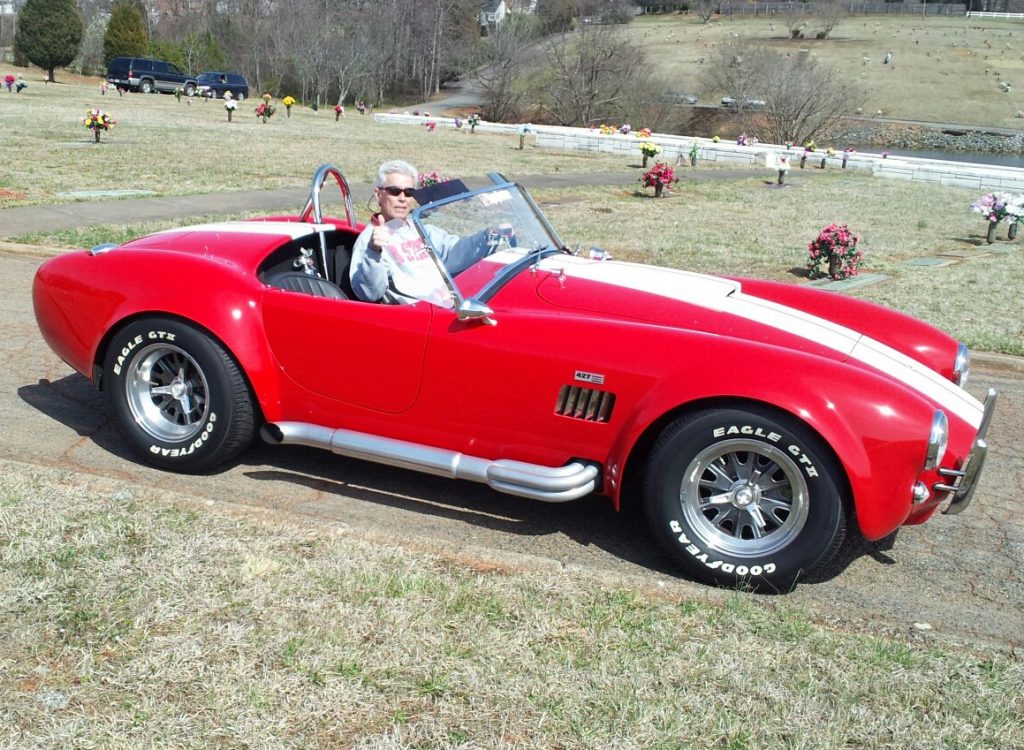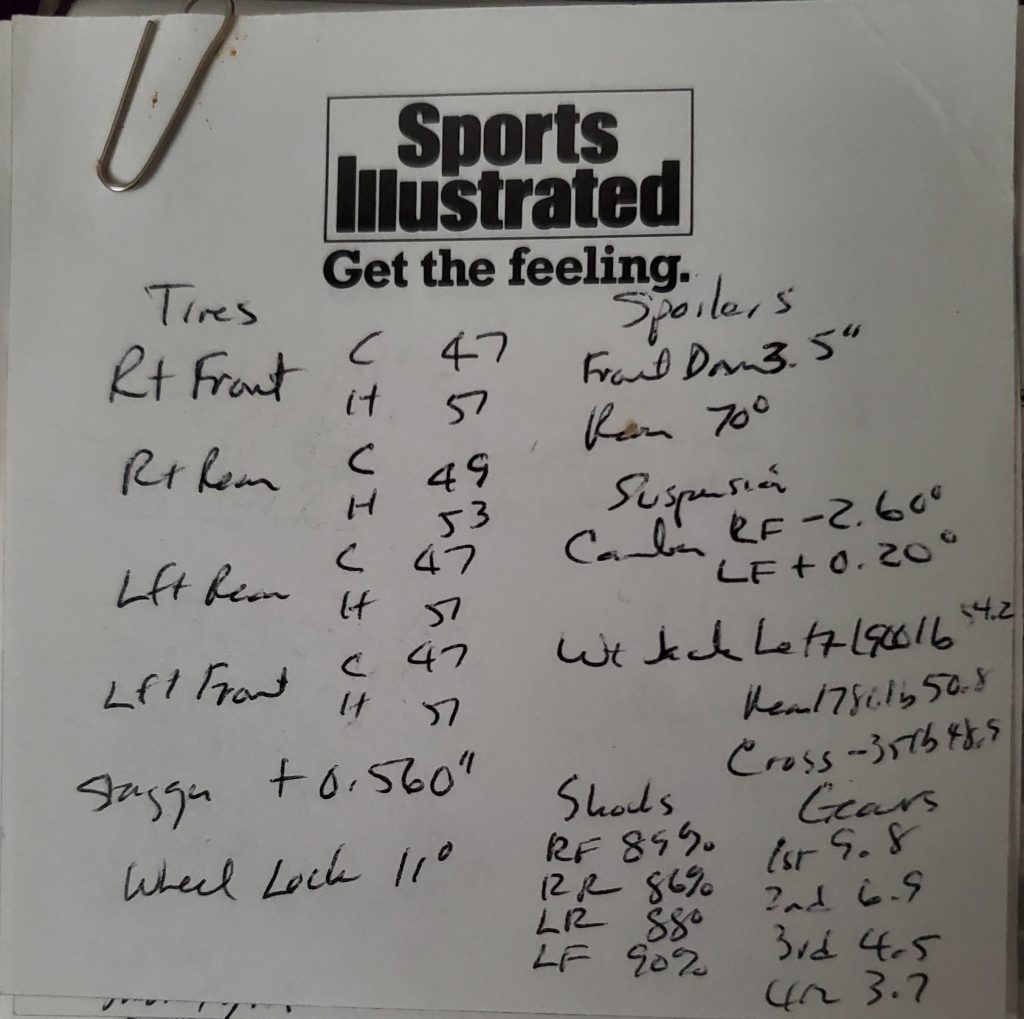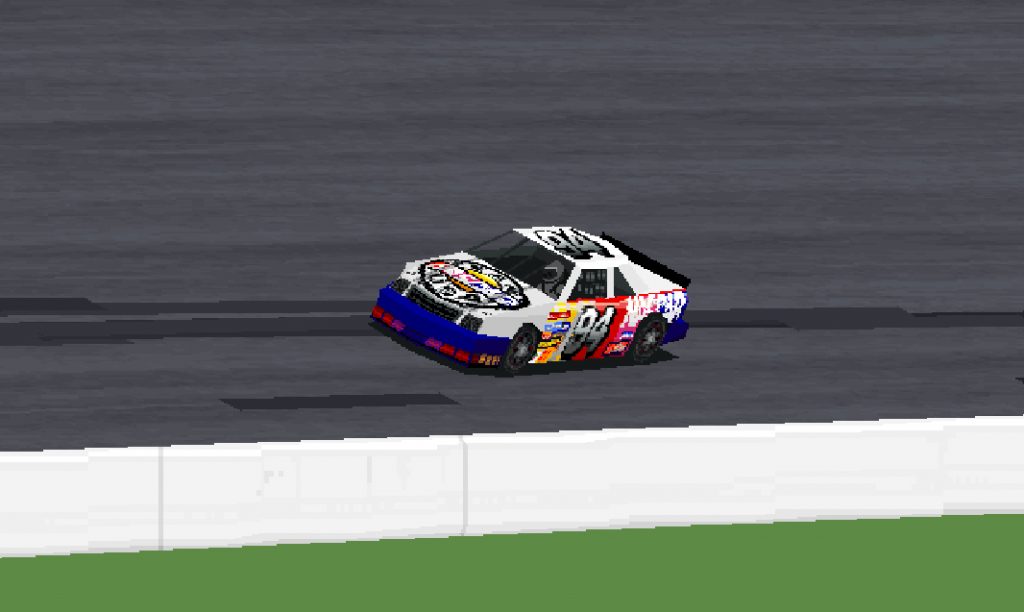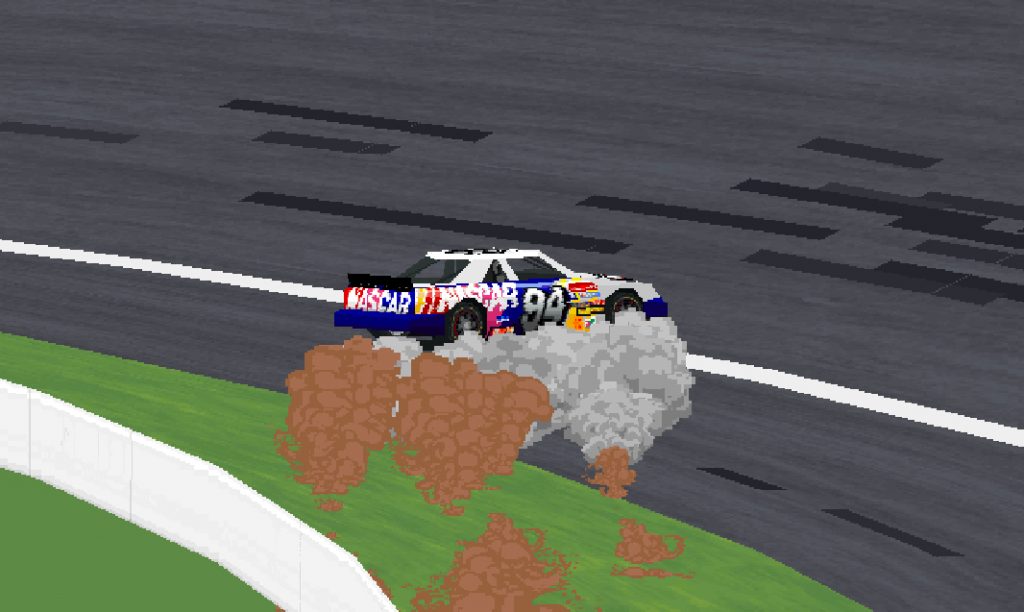My dad was the first sim racing alien I ever knew.
Granted, in those early days of racing video games just after the release of the original NASCAR Racing by Papyrus, he was the only sim racer I knew. And before the advent of live streams, world championship series, or any sort of organized online competition, it was tough to know how good anyone truly was at making pixelated cars turn left.
Still, that didn’t stop me from being in awe of my dad behind the wheel. I must have watched him drive hundreds of laps, always at the Charlotte Motor Speedway. It was fitting since the track that hooked me on real racing from the first time I heard the roar of engines from afar was also my gateway into sim racing, even if absorbed second-hand.
Just seven years old when the game was first released, my own attempts at driving were… less than stellar. It didn’t help that I thought the lap speeds in miles per hour were times in seconds, so my 100-second laps puttering around at highway speeds were never as competitive as I’d hoped.
I also couldn’t get the hang of pit stops. The mechanic in the Papyrus sims always required having your foot on the brake to begin pit service, so repeatedly reversing and jolting forward in and out of my box never gave my virtual crew their cue to get to work.
I eventually got better, mainly with a few years’ more experience on titles like NASCAR Racing 2 and NASCAR Racing 3, while my dad never spent much time with the sequels.
However, that couldn’t change my view that my dad was the best I would ever see on the original NASCAR Racing sim. He managed to perform well despite its primitive, low-resolution graphics, the lack of force feedback, and the not-quite-surround sound.
Or, perhaps, he did so well because of that simplicity.
Stripped of the vanities of modern titles, sim racing is little more than a physics problem: how can you get a mass from point A to point B as fast as possible, where point A equals point B and the route between them is a glorified circle? As an engineer by training and by trade, it’s no wonder he was so good at it.

All these years later, I never quite knew how I would stack up against my dad in his prime. While we did spend some track time together on iRacing in a fun league with a few of my friends, by then, the years had eroded his depth perception and reflexes, so he struggled to keep up with us spry young’uns.
It seemed like a question that would remain forever unanswered, until an unusual sequence of events unfolded this weekend that revealed a key clue about my dad’s performance.
Off at my mom’s to spend time with family for my birthday, an ice storm knocked out power at her house and left me little to do besides cleaning out the bookshelves in her office, stocked with old floppy disks, CDs, and game manuals that had been collecting dust for decades.
Sandwiched among them was our original copy of NASCAR Racing, box and everything. And stuck in there were a few less-than-sticky notes with the unmistakable handwriting of an engineer.
They were my dad’s setup adjustments, obviously for Charlotte since it’s the track he knew best. A second page, containing mostly his graphics settings, also included a number that my present-day self clearly recognized as a speed, not a time: 180.157.
It was the best present I could ask for, like a birthday card from my dad nearly three years after he died. And it sent me on a trip back in time to the 1994 sim and back to the original Charlotte Motor Speedway to see if I could be like Bruce.

After downloading a DOS emulator — now there’s a throwback! — and tinkering with configuration options so the game would run with my current computer, wheel, and pedals, I was set.
It was time to go testing at Charlotte aboard that familiar white #94 car. I started with the default ‘easy’ setup, just to get a feel for the sim and to see where my pace stood.
My first impression was a rush of nostalgia, especially as those dashed lines down the backstretch zoomed past my car. I clearly remember watching that from over my dad’s shoulder many years ago, and it always made it seem like he was driving at warp speed.
Then, at the end of the backstretch, a dose of reality: Wow, these cars drive like bricks!
Indeed, absent the aerodynamic advances of the past 25 years, the stock cars of 1994 required more than just a gentle lift into the corners, lest the car head straight up the banking and toward the wall. It was Newton’s first law with redneck reasoning: an object in motion will remain in motion unless you brake early, dummy!
Eventually, I managed a clean lap, and it was… slow. At 170.035 mph, I was 1.7 seconds off my dad’s target time.
I could almost hear him say you’re not gonna beat me like that!, followed by his trademark disarming wink that let you know he was just kidding around.
I steadily gained speed over the next few laps: 170.9, 171.1, 171.4. At a certain point, I had clearly hit a wall — actually, many of them around the track — and wasn’t going to find much more speed on the baseline setup.

So I entered the virtual garage and loaded the ‘fast’ setup, because with a name like that, it can’t be slower, right? On the track, I found an immediate improvement: 175.019 mph. Faster for sure, but still eight tenths off the pace.
It was then time to turn to my dad’s setup, hidden away for all these years until now.
As I input his handwritten settings into the garage screen, something immediately stood out. The shock settings were much stiffer than those on the default setups. I’ve heard that stiffer suspensions are a relatively recent development in motorsports, part of the aerodynamics-driven revolution to help seal off the front ends of cars against the track.
My dad, it seemed, was ahead of his time as an engineering expert. I’d even say he could have been a keen crew chief, if not for his upstanding and honest nature that might have kept him from searching for those gray areas in the rulebook where the best wrench-turners like Smokey Yunick, Ray Evernham, and Chad Knaus have thrived.
The question was, though, how would his handiwork drive?
Straight out the pits, I could tell it was loose, and very much on the edge. However, I could also tell it had the potential for speed, given how well — maybe too well — that it rotated mid-corner.
After plenty of spins and a few nervous but mediocre laps, something finally clicked in my mind: with the nose of the car stuck to the banking, I could drive much deeper into the corners than I first thought. Thanks to my dad’s foresight, those 1994 stock cars didn’t have to drive so differently from modern cars after all.
Now even more on edge entering the corners, it was still tough to complete a lap, and probably a hundred or more attempts at hotlaps nearly all ended in spins or crashes.

It took some extra setup tuning — a little higher tire pressures, a more balanced crossweight, but don’t touch those magical shock settings! — and I finally had a drivable setup.
After a solid lap, the speed flashed on my screen: 178.888. Still too slow, but only by two tenths. The goal finally seemed within reach.
A few attempts later, I had a strong run through turns 1 and 2, but wound up running the middle groove through turns 3 and 4, unable to get the car down to the white line on exit. I was ready to write it off and start another lap, when it happened…
I had done it. By less than one one-hundredth of a second, it was a new family best around Charlotte, set some 25 years after my dad’s record.
Going into this sim racing scavenger hunt, I wasn’t sure what to expect. Would I immediately find speed using whatever setup I tried? Would his adjustments be the key to a faster lap? And would beating his time be an easy effort, or an impossible mission?
In the end, it was achievable, but only barely after a full afternoon of trying, and perhaps my lap should come with a few asterisks next to it. I’ve had the benefit of thousands of hours of sim racing and study, aided by tools like real-time telemetry, while my dad made do with whatever knowledge and ability he had at the time, all while meticulously hand-crafting a setup that ultimately held a key to such a quick time.
In addition, I made a few concessions to boost my chances. My dad’s notes didn’t mention the weather he ran in, so I turned the air temperature as low as it could go. Nor did he list his fuel, so I put in 2 gallons, or just enough for a qualifying run.
Exactly what conditions he ran in, or how he found so much speed with such a loose but innovative setup, are secrets that will remain safe with him forever.
I can only be thankful that he still had another lesson to share, this one etched in black ink and memories, neither of which has faded over the years.